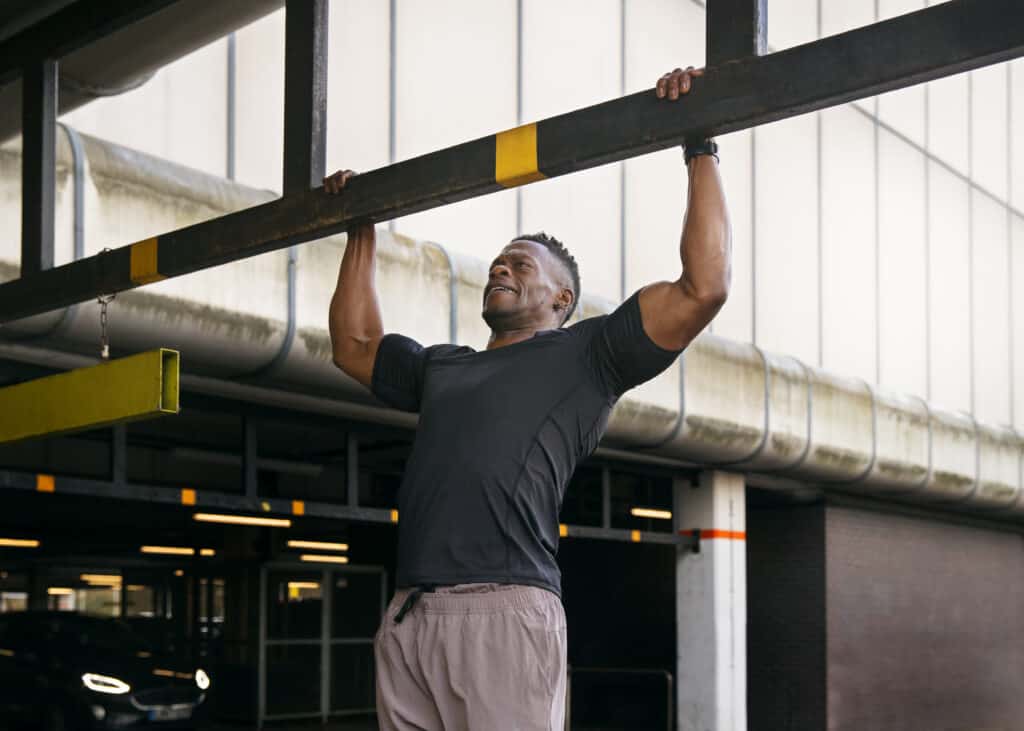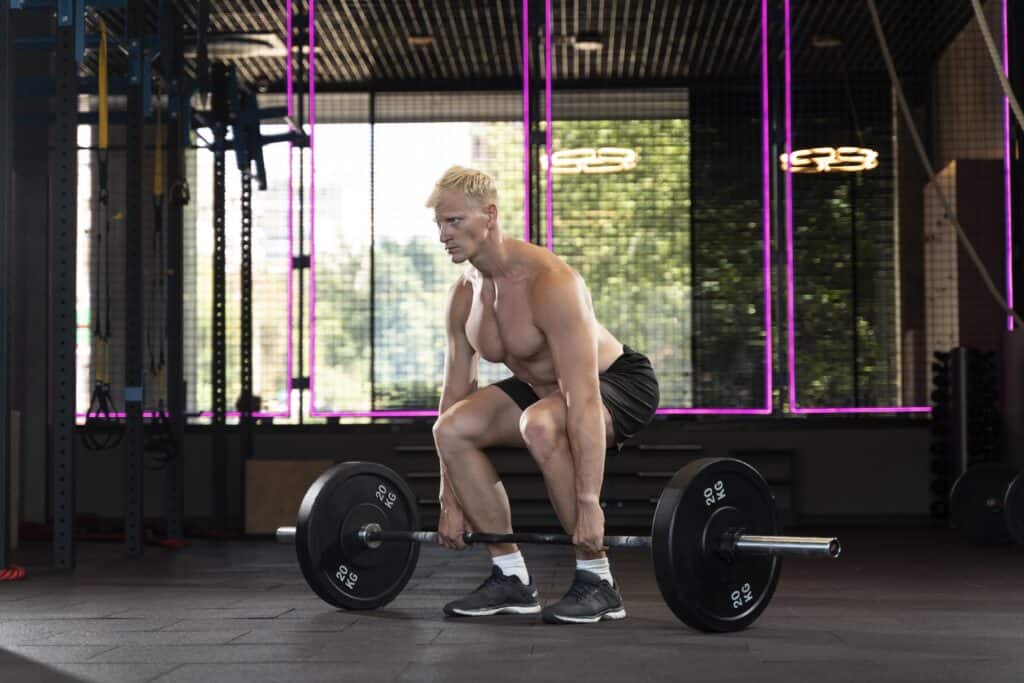Incorporating the right exercises into your weekly workouts is essential for overall health, functional fitness, and long-term injury prevention. Scientific research consistently points to five key movements that should be part of any balanced exercise routine. These important exercises target multiple muscle groups, promote functional movement, and improve cardiovascular health. Below are the most important five exercises you need to include in your weekly workouts and why each is critical, with examples of effective exercises for each muscle group.
1. Squat: Targeting Lower Body Strength
Squats are considered one of the best exercises for strengthening the lower body, particularly the quadriceps, hamstrings, glutes, and calves. They are a functional movement that mimics activities like standing up from a seated position, making them vital for daily tasks. According to a study published in the Journal of Strength and Conditioning Research, squats also improve bone density, joint health, and lower body endurance.
Exercise Example: Barbell Back Squat
- Stand with feet shoulder-width apart and place a barbell across your upper back. Lower your body by bending your knees, keeping your chest upright. Push through your heels to return to a standing position.
2. Deadlift: Building Posterior Chain Strength
Deadlifts work the posterior chain, which includes the hamstrings, glutes, lower back, and trapezius muscles. This exercise is crucial for developing overall strength and improving posture. A study in the Journal of Applied Physiology notes that deadlifts improve core stability and reduce the risk of lower back pain by strengthening muscles that support the spine.
Exercise Example: Conventional Deadlift
- Stand with your feet hip-width apart, grasp the barbell with both hands, and hinge at your hips. Keep your back flat, lift the barbell by extending your hips and knees, then return to the starting position.
3. Push-Up: Strengthening Upper Body Muscles
Push-ups are a classic bodyweight exercise that targets the chest, shoulders, and triceps, while also engaging the core for stability. Push-ups are versatile, can be modified for all fitness levels, and help improve upper body endurance. Research from the American Council on Exercise shows that push-ups are one of the most effective exercises for building upper body strength and endurance.
Exercise Example: Standard Push-Up
- Start in a high plank position with your hands slightly wider than shoulder-width apart. Lower your chest towards the ground while keeping your body straight, then push back up to the starting position.
4. Plank: Core Stability and Strength
The plank is an isometric exercise that targets the core, particularly the transverse abdominis, rectus abdominis, and obliques. A strong core is vital for balance, stability, and injury prevention, and research has shown that core strength contributes to better performance in both strength and endurance activities . Additionally, planks are low-impact and can be done anywhere, making them a convenient and effective addition to any workout routine.
Exercise Example: Forearm Plank
- Begin by resting on your forearms and toes, keeping your body in a straight line from head to heels. Engage your core and hold this position, ensuring your hips don’t sag.

5. Pull-Up: Developing Upper Body and Back Strength
Pull-ups are one of the best exercises for building upper body and back strength. They target the latissimus dorsi, trapezius, and biceps, making them crucial for overall upper body development. Studies, such as one published in the Journal of Sports Science and Medicine, have shown that pull-ups improve upper body endurance and muscle mass, contributing to better overall fitness.
Exercise Example: Standard Pull-Up
- Grab a pull-up bar with an overhand grip, hands shoulder-width apart. Pull your body up until your chin clears the bar, then lower yourself back down with control.
Why These Exercises Matter
Including these five exercises in your weekly workouts is essential for building a balanced body that is both strong and functional. Here’s why each movement pattern matters:
- Squats: Squats target multiple large muscle groups at once, promoting muscle growth and improving your ability to perform daily tasks, like lifting objects or getting up from a chair.
- Deadlifts: By working the posterior chain, deadlifts improve posture, back strength, and functional movement patterns, reducing the risk of injury.
- Push-Ups: Push-ups build upper body strength and endurance, supporting movements like pushing, lifting, and throwing.
- Planks: Core strength developed from planks stabilizes the entire body, improving performance in almost every other physical activity and enhancing balance and stability.
- Pull-Ups: Pull-ups engage muscles that are often neglected, especially in the back, improving pulling strength and helping with movements like climbing, lifting, or rowing.
Conclusion
Incorporating these five exercises into your weekly routine will ensure you are building strength, improving mobility, and supporting overall health. These exercises work major muscle groups and engage the core, which is critical for functional fitness. By targeting the body comprehensively, you can prevent injury, enhance performance, and promote longevity in both exercise and daily activities.
References
- Escamilla, R.F., et al. (2001). “Effects of technique variations on knee biomechanics during the squat and leg press.” Journal of Strength and Conditioning Research.
- McGill, S. (2007). “The biomechanics of low back injury: implications on current practice in industry and the clinic.” Journal of Applied Physiology.
- American Council on Exercise (ACE). “Effectiveness of Push-Ups for Upper Body Strength.”
- Hibbs, A.E., et al. (2008). “Core strength and its relationship to performance in division I female soccer players.” Journal of Strength and Conditioning Research.
- Paoli, A., et al. (2010). “Upper Body Strength and Endurance Response to Pull-Up Training.” Journal of Sports Science and Medicine.
Stay Strong Together
If you’re serious about building muscle and reaching your fitness goals, the Jefit app is the perfect tool to help get you there. With over 20 million downloads and more than 12 million bodybuilders using the app to track their workouts, Jefit is the ultimate strength training companion. Rated as the 2023 Best App and featured by top publications like Men’s Health, PC Magazine, and USA TODAY. Jefit boasts 42,000+ five-star ratings for its user-friendly design and comprehensive features. Whether you’re focused on protein intake, building strength, or tracking your progress, Jefit has everything you need to succeed. Download Jefit today and join millions of fitness enthusiasts transforming their bodies!
- Nutrition Trends Bodybuilders are Talking About in 2025 - November 26, 2025
- Smart Strength Training Backed by Jefit Data - November 19, 2025
- Break Through Strength Plateaus: JEFIT Guide - November 12, 2025
